Stay festive and safe this winter! Learn about toxic holiday plants and protect your loved ones. Happy, healthy holidays!
Winter Houseplants: Keeping Your Home Festive and Safe
As the frost creeps in and noses turn red, it’s undeniable that winter is on its way. With temperatures dropping and trees shedding their leaves, many are eager to bring a touch of festive greenery indoors. In fact, Google searches for winter houseplants have surged by a whopping 5900% in the past week alone as people worldwide seek to add a dash of vibrance to their homes during the chilly months.
However, amidst the quest for winter charm, there’s a hidden danger lurking for our beloved pets. Surveys have shown that 10% of pets have fallen ill after nibbling on indoor foliage, with a staggering 43% of them requiring urgent veterinary care (Vets Now). To ensure everyone’s safety, the experts at Clear It Waste have compiled a list of popular toxic plants that often grace our homes during the winter season.
Holly: A Classic with Hidden Dangers
History:
Holly, an all-year-round classic, takes on a special charm during the winter months, thanks to its evergreen nature and vibrant red berries. It has been a firm favorite for centuries, adorning homes with its festive appeal.
Toxicity Alert:
While the holly leaves may be sharp and potentially cause small injuries, the real peril lies in its striking red berries. These berries contain a chemical called Theobromine, the same compound found in chocolate, and it is highly toxic to dogs and cats. Consumption can result in vomiting, diarrhea, high blood pressure, and, in severe cases, even death. Holly leaves also contain Theobromine, although in smaller amounts, making it advisable to keep holly away from pets this winter.
Expert Tips:
Keep holly out of reach of pets and children. Opt for pet-friendly alternatives to decorate your home.
FAQs About Holly:
- Are holly berries toxic to humans? Yes, they can be toxic if ingested in large quantities, causing symptoms similar to those in pets.
- Can I use artificial holly as a safer alternative? Yes, artificial holly is a safe choice for festive decorations.
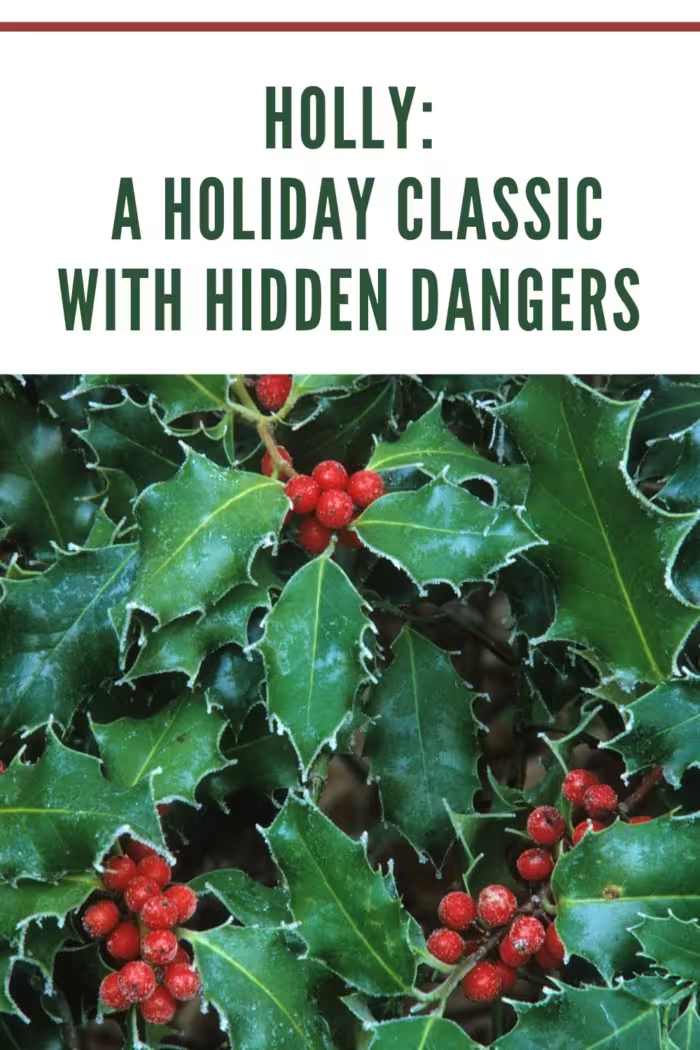
Yew: A Beautiful Danger
History:
Yews, with their unique light green needles, brown cones, and red berries, have long been associated with cemeteries, where legend has it they were used to keep livestock out and maintain the grass and plants within.
Toxicity Alert:
Yews are one of the most dangerous trees you can find. They contain a chemical called taxines in their berries, cones, and even needles, which is extremely poisonous to humans and pets alike. Symptoms of yew poisoning in animals include diarrhea, vomiting, trembling, and convulsions, with severe cases potentially leading to comas.
Expert Tips:
As beautiful as yews may be, it’s best to avoid them in homes with pets or children due to the grave risks they pose.
FAQs about Yew:
- Do yew berries have any beneficial uses? No, yew berries are highly toxic and should not be consumed.
- Are yews commonly used for landscaping? Despite their danger, yews are still used in landscaping due to their aesthetic appeal, but caution is required.
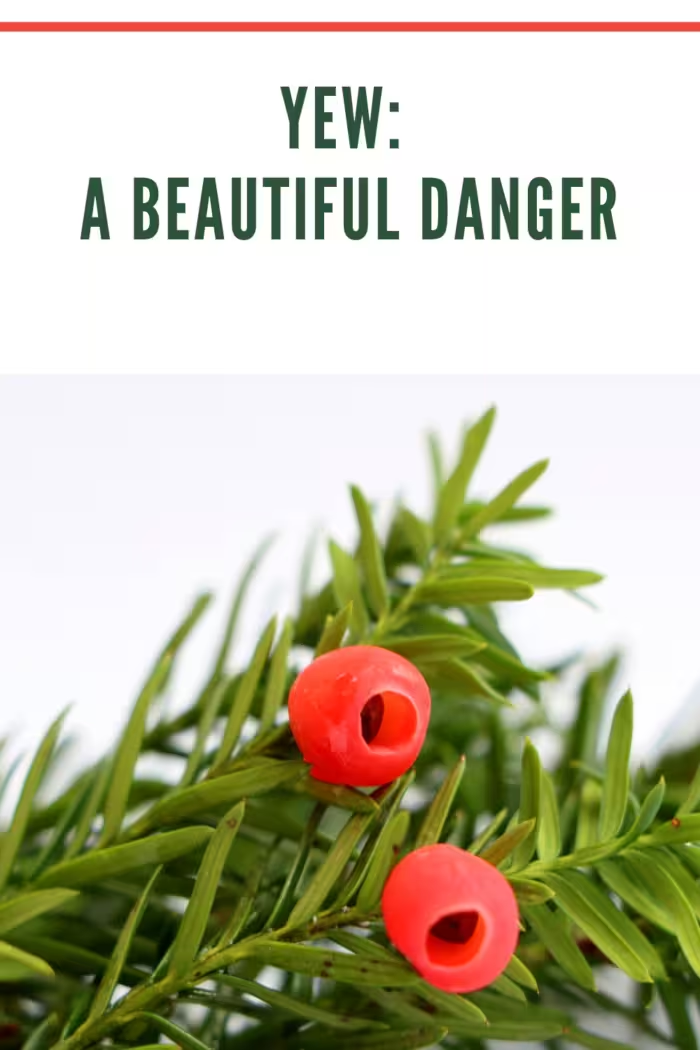
Winter Cherry: A Tempting but Toxic Treat
History:
The Jerusalem Cherry, also known as Winter Cherry, produces orange-red berries that often grace winter festivities, adding a pop of color to holiday decorations.
Toxicity Alert:
Despite their inviting appearance, Winter Cherries are incredibly poisonous to both humans and animals. These berries are sometimes mistaken for cherry tomatoes due to their similar shape and color, making them a risky addition to any table spread. The poison in Winter Cherries is called solanocapsine, with higher concentrations found in unripe fruit and the leaves of the plant.
Expert Tips:
Given the potential harm, it’s wise to keep Winter Cherries out of reach of animals and children, or consider excluding them from your home decor altogether.
FAQs About Winter Cherry:
- Can humans safely handle Winter Cherry plants? While handling Winter Cherry is generally safe, it’s advisable to wash hands thoroughly after touching them.
- What’s the best alternative for festive, non-toxic decorations? Opt for artificial berries or other non-toxic plants to ensure safety.
Alternate Names: Jerusalem Cherry
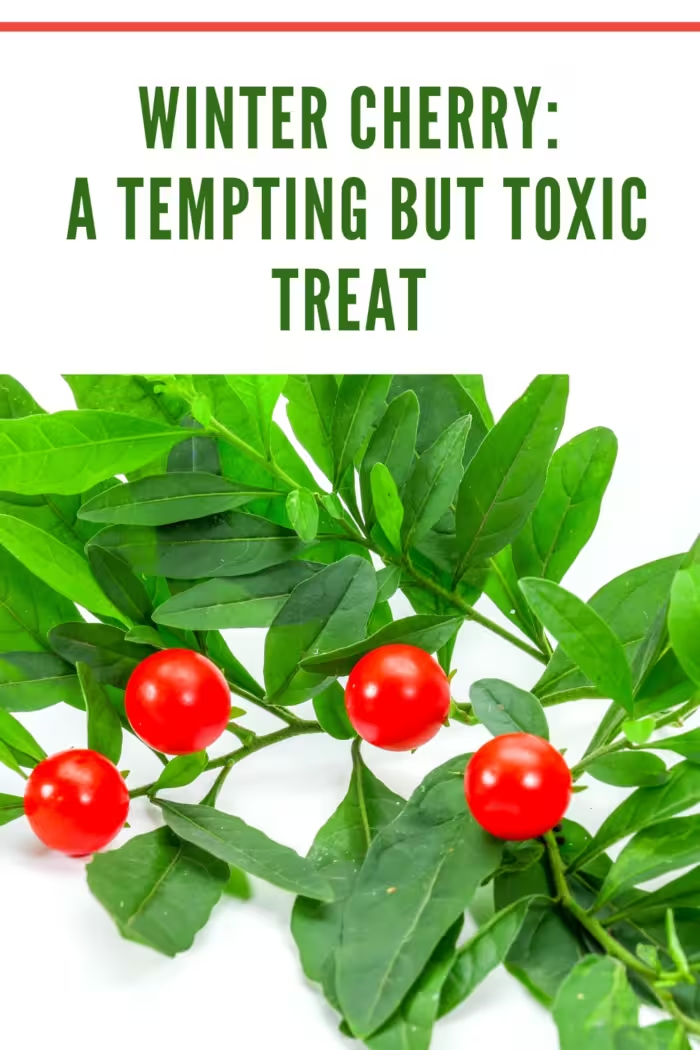
Christmas Trees: Festive, but Beware of Needles
History:
Christmas trees, while associated with December celebrations, often find their way into homes well in advance. These evergreen symbols of the season are central to holiday traditions worldwide.
Toxicity Alert:
While it’s common knowledge that dogs and cats should avoid ingesting pine needles due to their sharp ends, there are additional dangers to be aware of. Swallowing pine needles can lead to blockages or stomach punctures in pets, requiring urgent veterinary care. Live Christmas trees also pose a danger, as the fertilizers used to maintain them can be harmful if ingested by animals, causing symptoms such as vomiting and diarrhea.
Expert Tips:
Keep an eye on your pets around Christmas trees, and ensure that any ingested needles are promptly addressed. Be cautious about the fertilizers used to maintain live trees.
FAQs about Christmas Trees:
- Can artificial Christmas trees pose any risks to pets? Artificial trees are generally safer, but some animals may still chew on them, so supervision is advised.
- What’s the best way to prevent pets from chewing on Christmas trees? Distract pets with safe, pet-friendly toys and treats to keep them away from the tree.
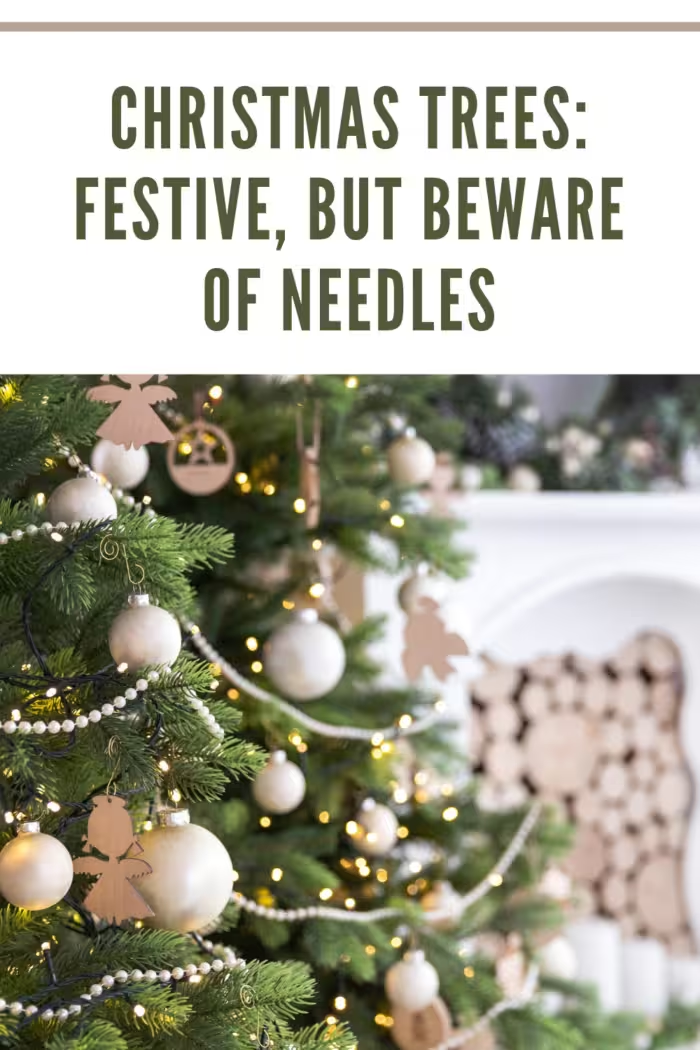
Poinsettia: A Festive Beauty with Hidden Risks
History:
Poinsettias, with their alluring red hues and elegantly shaped leaves, are a popular addition to many Christmas displays, brightening up homes with their festive charm.
Toxicity Alert:
Poinsettias have long been considered extremely poisonous to animals and humans if ingested. However, recent research suggests that the plant’s poison levels may be lower than previously believed, with minimal risk. The sap of the plant can cause a mild reaction when in contact with the skin.
Expert Tips:
While Poinsettias may be safer than once thought, it’s still best to keep them out of reach of pets and children to prevent nausea and vomiting from excessive ingestion.
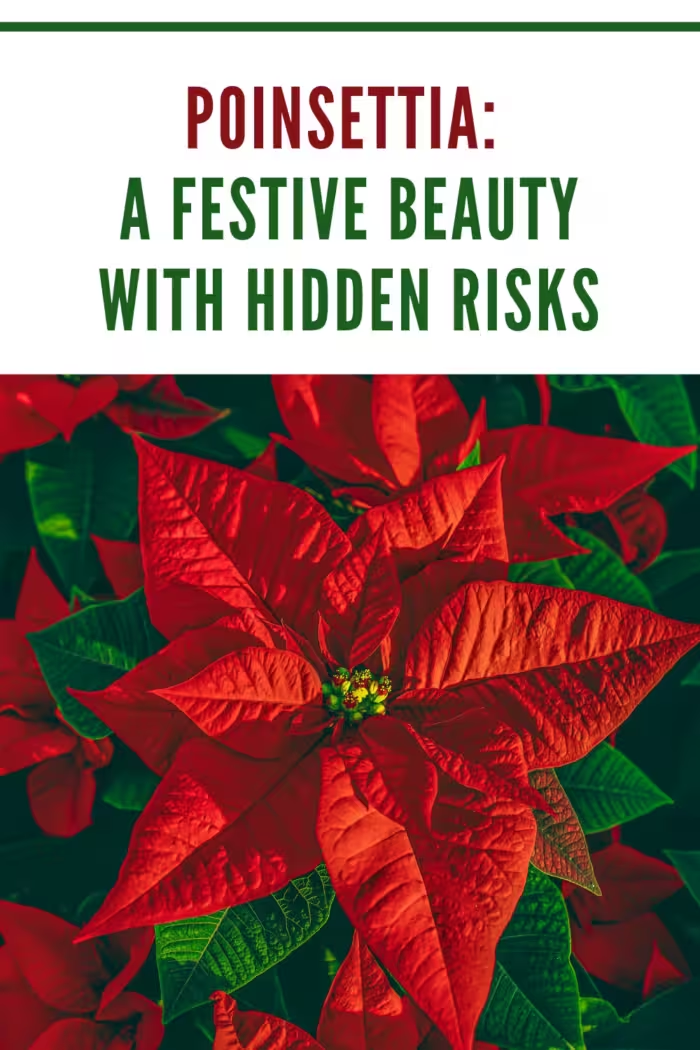
Final Thoughts
As the winter season blankets our homes with festive cheer, it’s crucial to be aware of the potential dangers that some common decorative plants can pose, particularly to our furry friends. While holly, yew, winter cherry, Christmas trees, and poinsettias add a touch of magic to our celebrations, they also harbor hidden risks.
The toxic components found in these plants can lead to various health issues for both pets and, in some cases, even humans. It’s essential to exercise caution, especially if you have animals or young children in your home. Consider opting for pet-friendly decorations or artificial alternatives to ensure a safe and joyful holiday season for all.
By staying informed and taking preventive measures, you can create a winter wonderland in your home without compromising the health and well-being of your loved ones, including your four-legged companions. May your winter festivities be merry, bright, and, above all, safe.
Stay festive and safe this winter! Learn about toxic holiday plants and protect your loved ones. Happy, healthy holidays!
